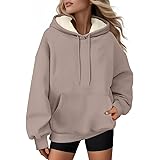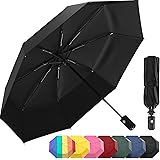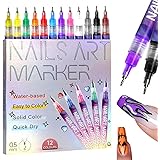The concept of luxury is undergoing a profound transformation. As explored in Marina Spadafora’s insightful TEDx talk, true luxury is now defined by ethical practices and environmental stewardship. Her journey illustrates a powerful shift. This article expands on the ideas presented in the video. It highlights the growing importance of sustainable fashion.
Ms. Spadafora’s career began in traditional high fashion. She worked with iconic photographers. Her early collections gained significant attention. She also served as a senior design consultant. Esteemed brands like Ferragamo and Prada were among her clients. This period was marked by creative expression. Yet, a deeper purpose was sought.
The Shift from Traditional to Ethical Luxury
A personal turning point occurred around 2007. Ms. Spadafora found herself questioning industry values. Discussions about skirt lengths felt trivial. The impact on people and the planet became paramount. A new path was desired. This led her to redefine luxury entirely. Her work moved towards positive global change.
Many professionals seek similar fulfillment. The fashion industry holds vast potential. Good practices can be implemented. Her vision was clear. It involved doing good through her expertise. This inner calling reshaped her professional life. A new direction was embraced wholeheartedly.
Embracing Social Entrepreneurship in Fashion
Ms. Spadafora became a creative director. Europe’s largest fair trade organization benefited from her vision. This role involved global travel. Artisans from diverse cultures were met. Their craft and stories inspired her. Many were social entrepreneurs.
Social entrepreneurship blends business with social impact. Fair wages are paid to workers. Environmental pollution is avoided. A portion of profits aids communities. This model provides schools for street children. It offers micro-credit to artisans. Such initiatives create significant change. They foster local economic growth.
Real-World Impact: Artisan Collaborations
One notable project involved Maasai women in Tanzania. They faced extreme poverty. Trees were being cut for charcoal. This activity contributed to desertification. An Italian NGO sought a solution.
Maasai communities often raise livestock. Sheep, goats, and cows are common. Their hides were previously discarded. A new industry was thus envisioned. A facility for treating leather was established. Bags and accessories were then designed. This project stopped tree cutting. It provided income and skills. Many lives were positively impacted.
Another inspiring initiative was in Ethiopia. Forty-five thousand bags were produced. These bags were for a Pinko collection. The design was inspired by Omo Valley body painting. This work supported a small factory. More local people were hired. Funds were also given to the inspiring tribes. Such collaborations showcase ethical production.
Major Brands Adopt Sustainable Fashion Practices
The success of these projects gained attention. Large brands began seeking collaborations. They wanted to integrate sustainability. Moschino was one such brand. An African-inspired collection was planned. Wax print materials were sourced in Ghana. Twenty-five thousand meters of fabric were purchased. This showed a commitment to ethical sourcing.
Studio 189 also exemplifies this trend. It is co-founded by Rosario Dawson. This brand creates beautiful collections in Ghana. The United Nations supported their initial show. Studio 189 is now thriving. It champions African craftsmanship and fair labor. This demonstrates scalable impact. Sustainable practices are being prioritized.
Innovative Approaches to Circularity
Work with the UN extended to Egypt. Two fantastic projects were developed. One focused on organic cotton. Another project addressed textile waste. Recycled denim pre-consumer fabric was utilized. This fabric is often discarded. Fifteen percent of fabric falls as waste. It happens in cutting rooms during production. This pristine fabric has nothing wrong with it. It is perfectly good material.
The recycling process transformed this waste. New yarn was created. This ensures nothing is wasted. It represents a circular economy principle. Resources are kept in use. Waste and pollution are minimized. This sustainable approach is gaining traction. Its benefits are far-reaching.
Generational Pressure and Design Innovation
Younger generations are demanding change. Gen Z and millennials expect transparency. They seek ethical production methods. Their purchasing decisions reflect this. Products causing harm are rejected. This pressure fuels industry shifts. A more responsible future is expected.
Many sustainable designers are emerging. Their creative solutions are inspiring. Bethany Williams, an English designer, is one example. She upcycles magazine strips. Colorful magazines become new fabric. Her textile workshop supports a community. It helps young people with drug abuse problems. This approach combines social and environmental viability.
Mozi Mozi from Peru offers another innovation. It works with local artisans. Natural latex is used as a leather alternative. This rubber comes from trees. It is applied to organic cotton sheets. The materials are bonded over smoky fires. This creates a unique and sustainable material. It is a fascinating production process.
Nous Etudions, an Argentinian brand, also innovates. They produce a leather-like material. It is called kombucha leather. This material is made by fermenting tea, yeast, and sugar. The resulting gel dries into a leather-like texture. It is biodegradable and animal-free. Chain, another Argentinian brand, uses only organic fabrics. These examples highlight diverse sustainable choices.
New Marketplaces for Sustainable Fashion
New brands often face market challenges. Selling sustainable products can be difficult. Innovative business models are therefore crucial. The Canvas in New York is a prime example. Devin Gilmartin, a co-founder, pioneered a profit-sharing idea. This concept utilizes empty commercial spaces. Landlords are offered a share of sales. Rent is not initially charged.
This model benefits all parties. Sustainable designers gain retail access. Landlords monetize unused spaces. The Canvas supports ethical businesses. Locations in Manhattan and Brooklyn are used. This approach fosters growth. It builds a supportive ecosystem for ethical fashion. New opportunities are continuously opening up.
Education and Advocacy for a Fairer Future
Education plays a vital role in this transformation. Marina Spadafora is a professor. She teaches at important institutions. The Chavon School of Design is one such place. Students participate in hands-on workshops. They learn about sustainable practices. One workshop involved upcycling men’s shirts. Students disassembled old garments. They created entirely new designs. This fosters creativity and resourcefulness.
The Fashion Revolution movement further drives change. It began on April 24, 2013. This followed the Rana Plaza factory collapse in Bangladesh. Over 1,138 people died. Many more were injured. This tragedy highlighted severe industry issues. The movement demands justice for garment workers.
Seventy million garment workers exist worldwide. Most are women. They often earn below poverty wages. Unfair payment causes child labor. This urgent problem must be addressed. The hashtag #WhoMadeMyClothes? raises awareness. Fashion Revolution Week (April 23-29th) promotes action. It encourages consumers to question brands. A revolution for fair, sustainable fashion is underway. True luxury means respect for all people and the environment.











